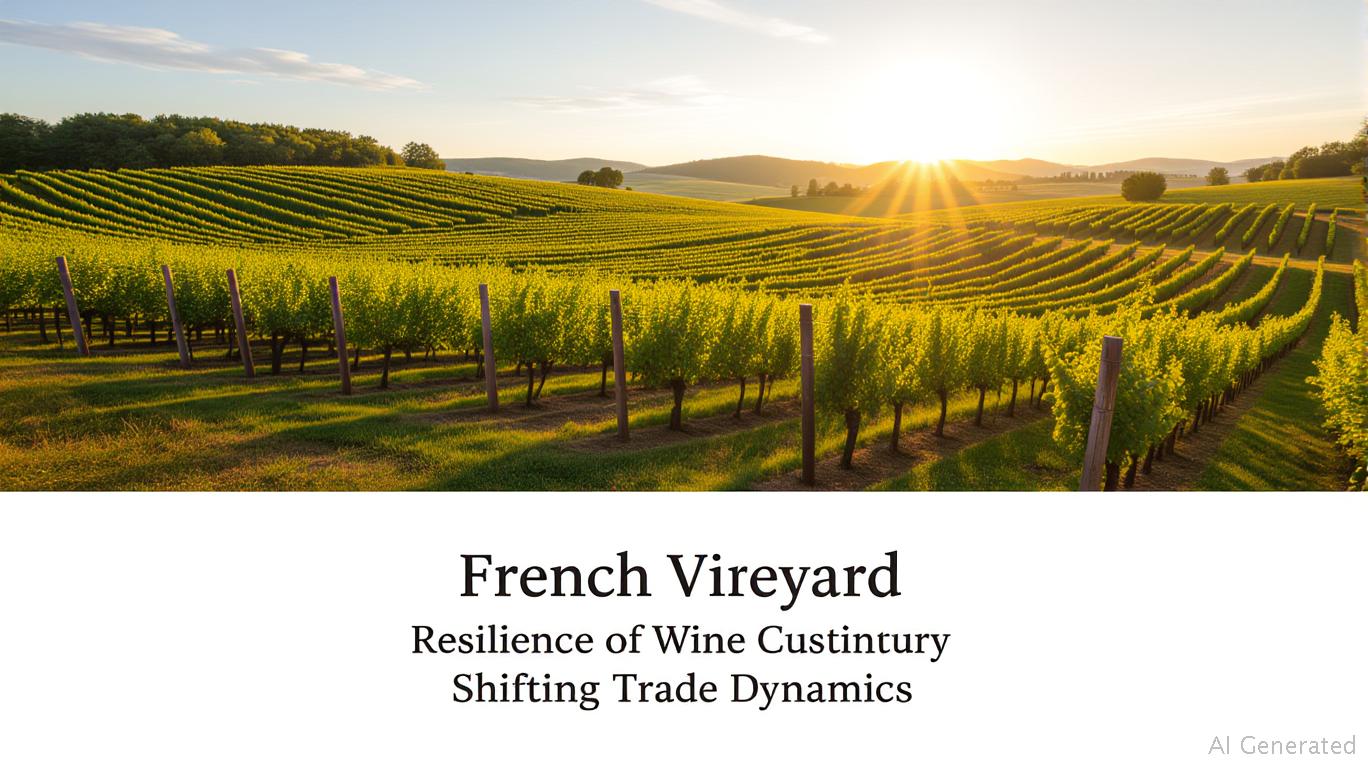The U.S. tariffs on French wine and cheese have entered a new phase of volatility, with rates suspended until early August . This limbo is forcing French producers to pivot markets, while American consumers face the specter of higher prices and scarcer luxury options. For investors, the turbulence presents opportunities in tariff-resistant sectors and U.S. alternatives—but also risks tied to overexposure to vulnerable exports.
The Tariff Tightrope: Rates in Flux, Markets in Motion
As of July 2025, the U.S. maintains a baseline 10% tariff on French imports, with a delayed 20% rate set to take effect on July 9 for the EU. Meanwhile, specific products like wine and cheese remain under threat of additional tariffs up to 30%. This uncertainty has pushed French producers to reallocate exports aggressively.

The EU’s $350 million annual dairy exports to the U.S.—including iconic cheeses like Brie—are now at risk. Producers are redirecting shipments to emerging markets like Brazil, where demand is rising and tariffs are more favorable. This geographic pivot underscores a broader trend: French agribusiness is diversifying away from the U.S. to mitigate tariff fallout.
Consumer Pricing Dynamics: A Perfect Storm
The tariffs’ cascading effects are already visible. In 2019, a 25% tariff on French wine triggered a 54% drop in U.S. imports. Current rates, though temporarily lower, could soon surpass that threshold. For American consumers, this means:
– Higher prices: Importers will pass tariff costs to retailers, squeezing margins.
– Reduced availability: Premium wines (e.g., Bordeaux) may vanish from shelves as distributors prioritize lower-cost alternatives.
– Inflation amplification: With the U.S. dollar weakening, French producers may raise prices further to offset losses.
Investment Opportunities: Playing the Tariff GameFrench Tariff-Resistant Sectors: Crémant de Bourgogne: This sparkling wine, often cheaper than Champagne, faces lower tariff exposure and is gaining domestic popularity in France.
Regional cheeses: Hard cheeses like Comté or Roquefort may be less impacted by tariffs due to niche demand or labeling loopholes.
U.S. Alternatives:
California sparkling wines: Producers like Domaine Carneros or Schramsberg could capitalize on reduced French competition.
Domestic dairy: U.S. cheese makers (e.g., Wisconsin’s Sartori Foods) may see demand rise as imported options become pricier.
ETF Plays:
The Consumer Staples Select Sector SPDR Fund (XLP) includes companies exposed to rising food prices. French ETFs with agricultural exposure, such as the iShares MSCI France ETF (EWQ), could rebound if tariffs are resolved—but tread carefully. Caution: Avoid Overexposure to Tariff-Sensitive ExportsLuxury wines: High-end Bordeaux and Burgundy exporters (e.g., LVMH’s Moët Hennessy division) face steep headwinds. Their stocks may slump if tariffs escalate. General French agribusiness: Companies reliant on U.S. sales (e.g., Fonterra’s dairy divisions) are vulnerable to revenue shocks. Final Analysis: Balance Risk and Reward
The tariff volatility is a double-edged sword. While French producers adapt by shifting markets, U.S. consumers and investors must navigate higher prices and scarce luxuries. Investors should prioritize defensive plays in tariff-resistant sectors and U.S. alternatives while hedging against further trade escalation.
Bottom Line: Shift assets toward domestic producers and niche French exports less exposed to tariffs. Avoid overcommitting to luxury wine stocks unless you’re betting on a swift trade resolution—a gamble best left to speculators.
This analysis underscores the need for strategic reallocation in turbulent trade environments. The next 60 days will be critical as tariff deadlines loom—but the winners will be those who see beyond the storm.

